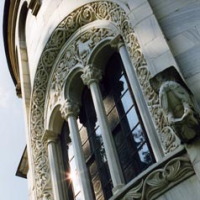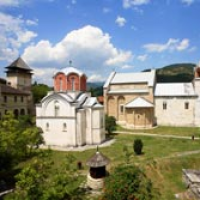Studenica
Studenica
Close to the picturesque Ibar river gorge, on the right bank of the river Studenica, surrounded by high protective walls, the monastery of Studenica rises up – the endowment of Grand Prince Stefan Nemanja, founder of the independent Serbian state and of a dynasty which would rule Serbia for a full two centuries.
It is the most important mediaeval Serbian monastery and a major spiritual and artistic centre of the Serbian people.
It took more than a decade – from 1183 to 1196 – to create this most beautiful work of Serbian mediaeval architecture. Since the 12th century when its community was founded, Studenica has never once seen its monastic life interrupted. As the endowment and final resting-place of the founder of the Nemanjić dynasty, Studenica served as an inspiration to many rulers from this line, who built mausoleums resembling the Church of the Mother of God.
The Church of the Mother of God is considered one of the most important examples of the Raška school of architecture. An original blend of a Byzantine sense of space and the building's structure with exterior forms and finishing in white marble which derive from Romanesque architecture make Studenica a masterpiece of central European architecture.
The frescos, masterpieces of Byzantine painting from the early 13th century, trace the path of Serbian mediaeval art. Its vaults guard some prime examples of Serbian applied art, such as the ring of Stefan Nemanja, objects made of metal, burial shrouds, charters and other relics.
A special place in the Studenica monastery complex is occupied by the King’s Church, endowment of King Milutin from 1314, with its exceptionally refined wall paintings. Taken as a whole they are one of the most beautiful examples of Serbian mediaeval art found anywhere.
With its churches, dining rooms, belltowers and living quarters, Studenica has retained its original function and is a site protected to the greatest extent possible under law, and has been on the UNESCO World Heritage List since 1986. The Studenica monastery is located on the Transromanica Cultural Route.




Comments
Leave a comment